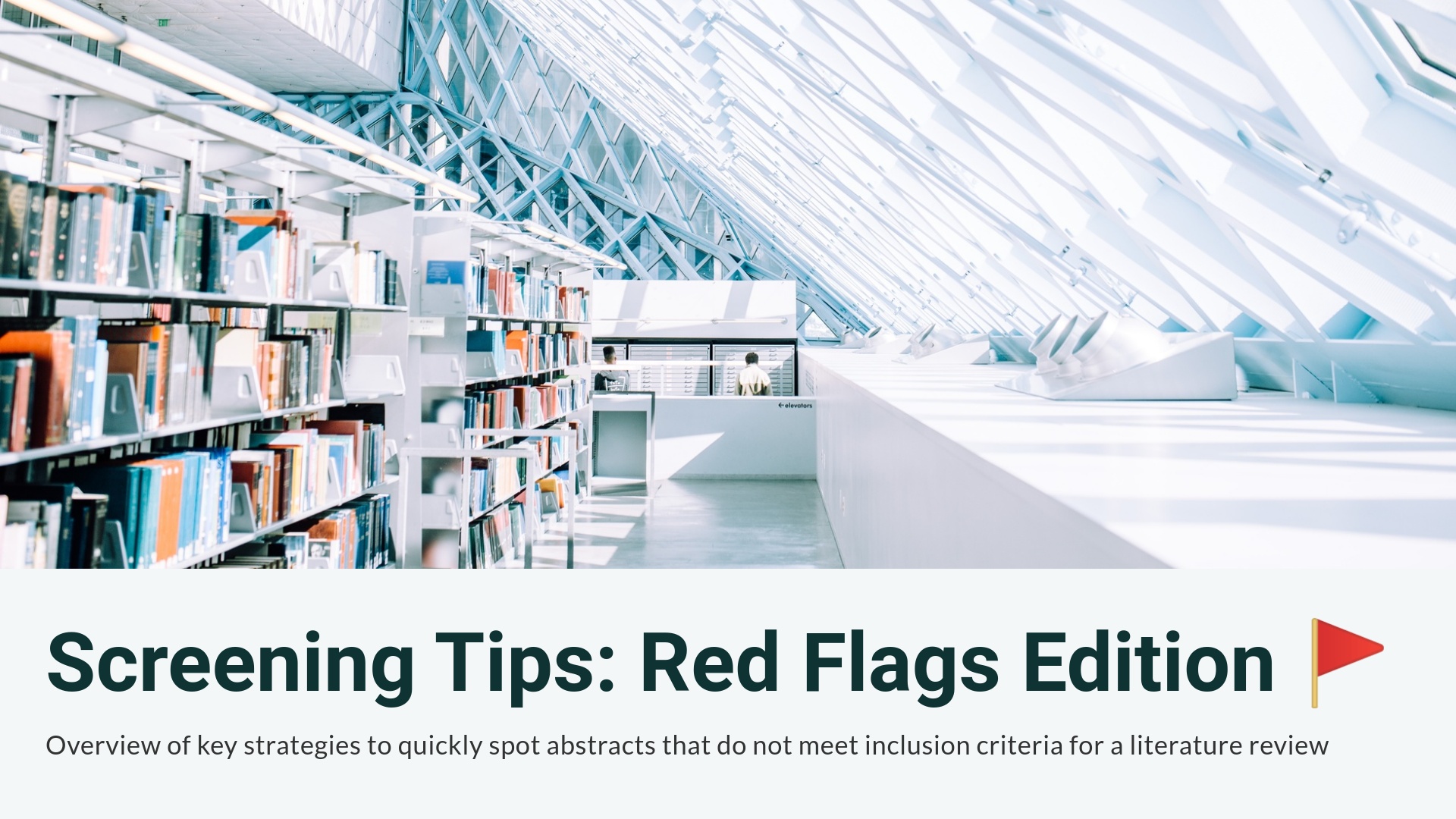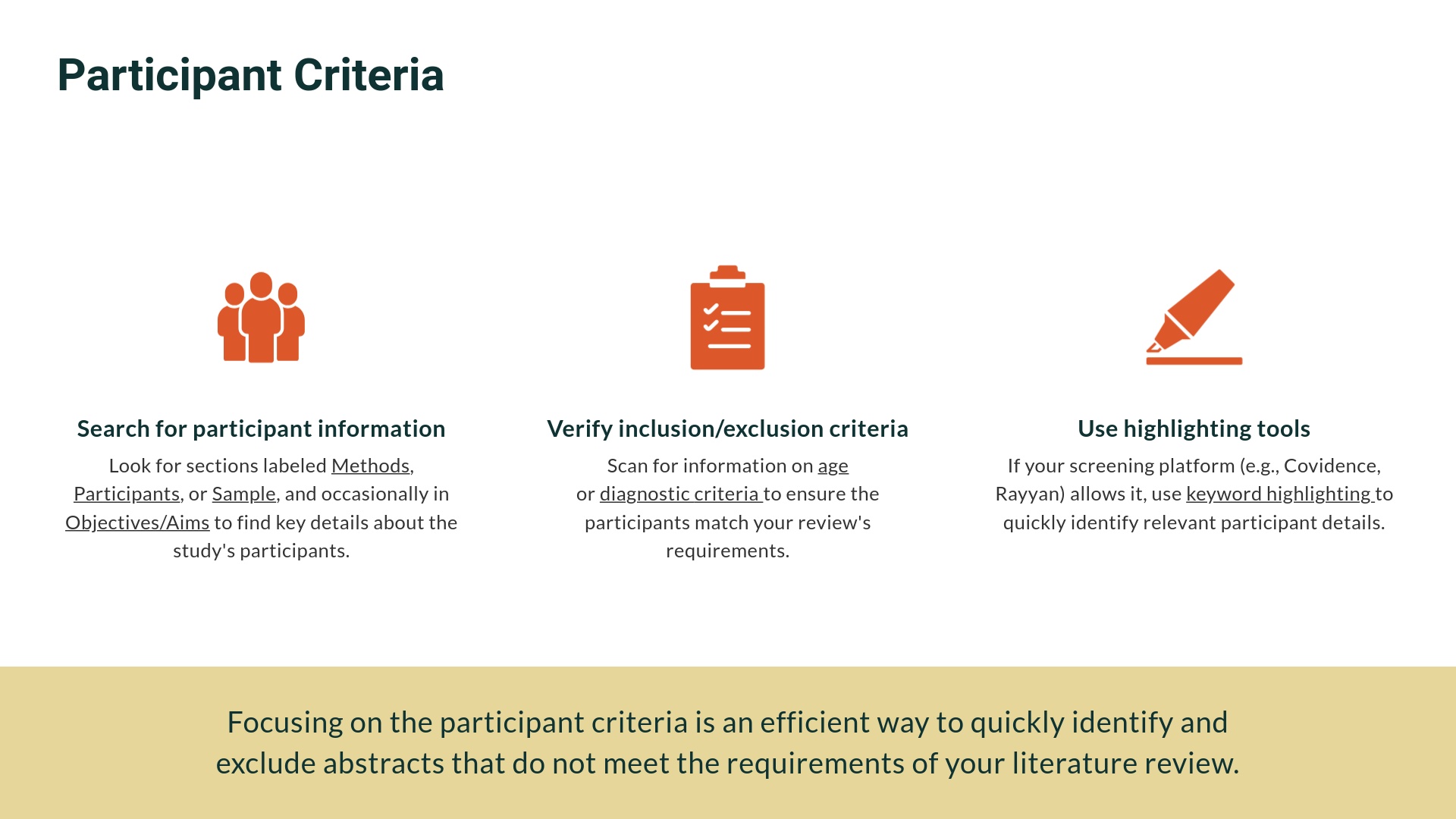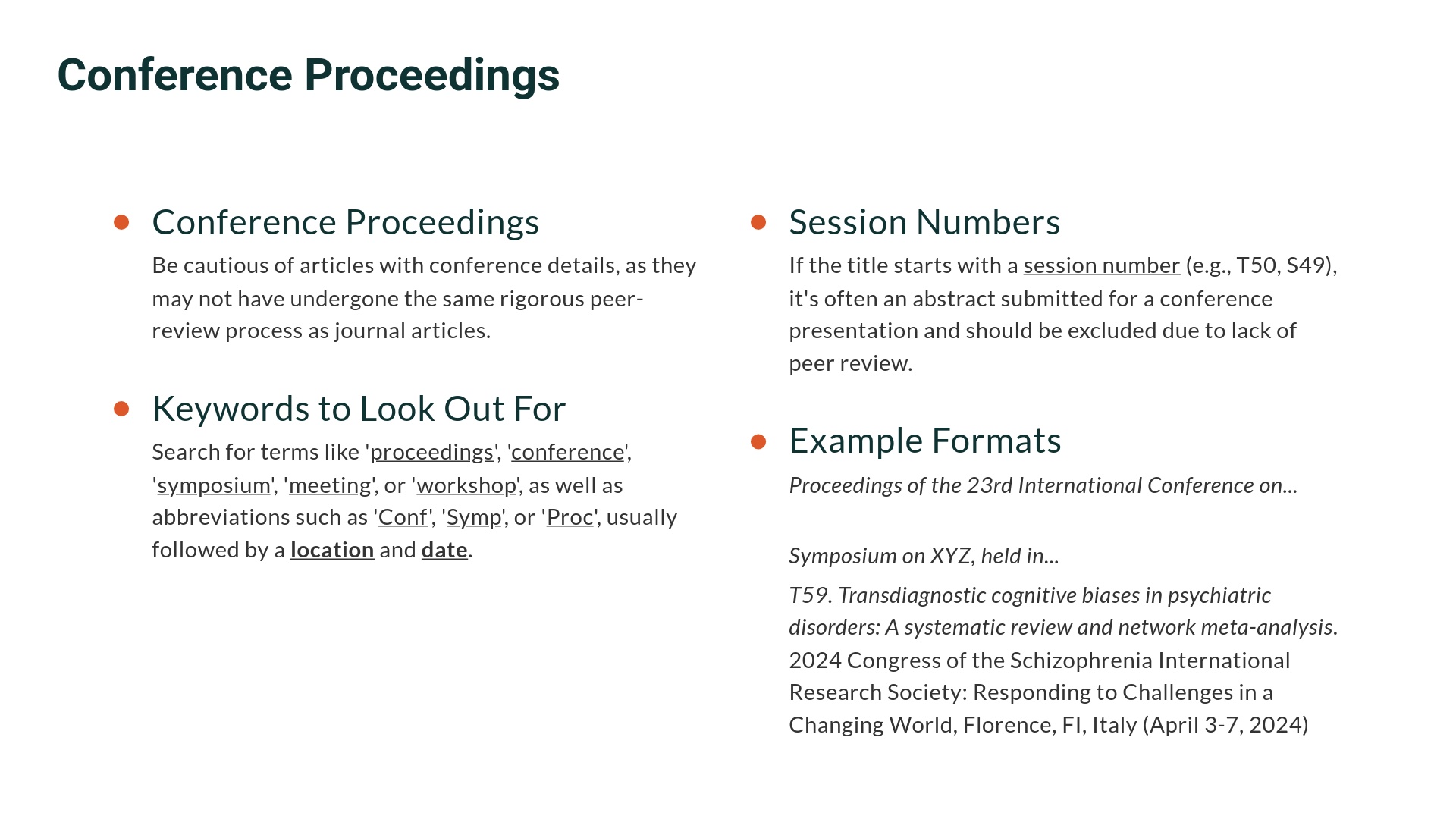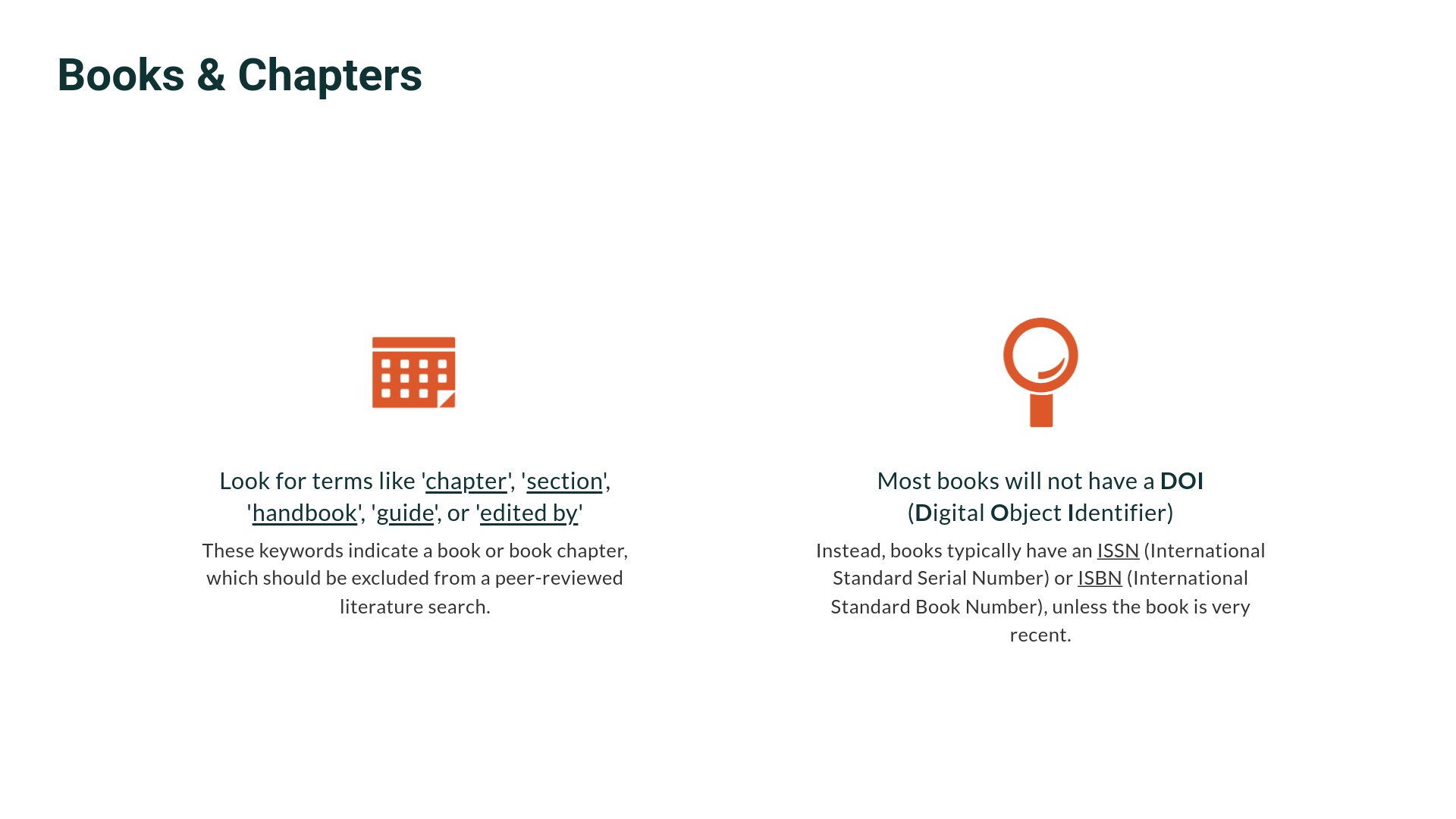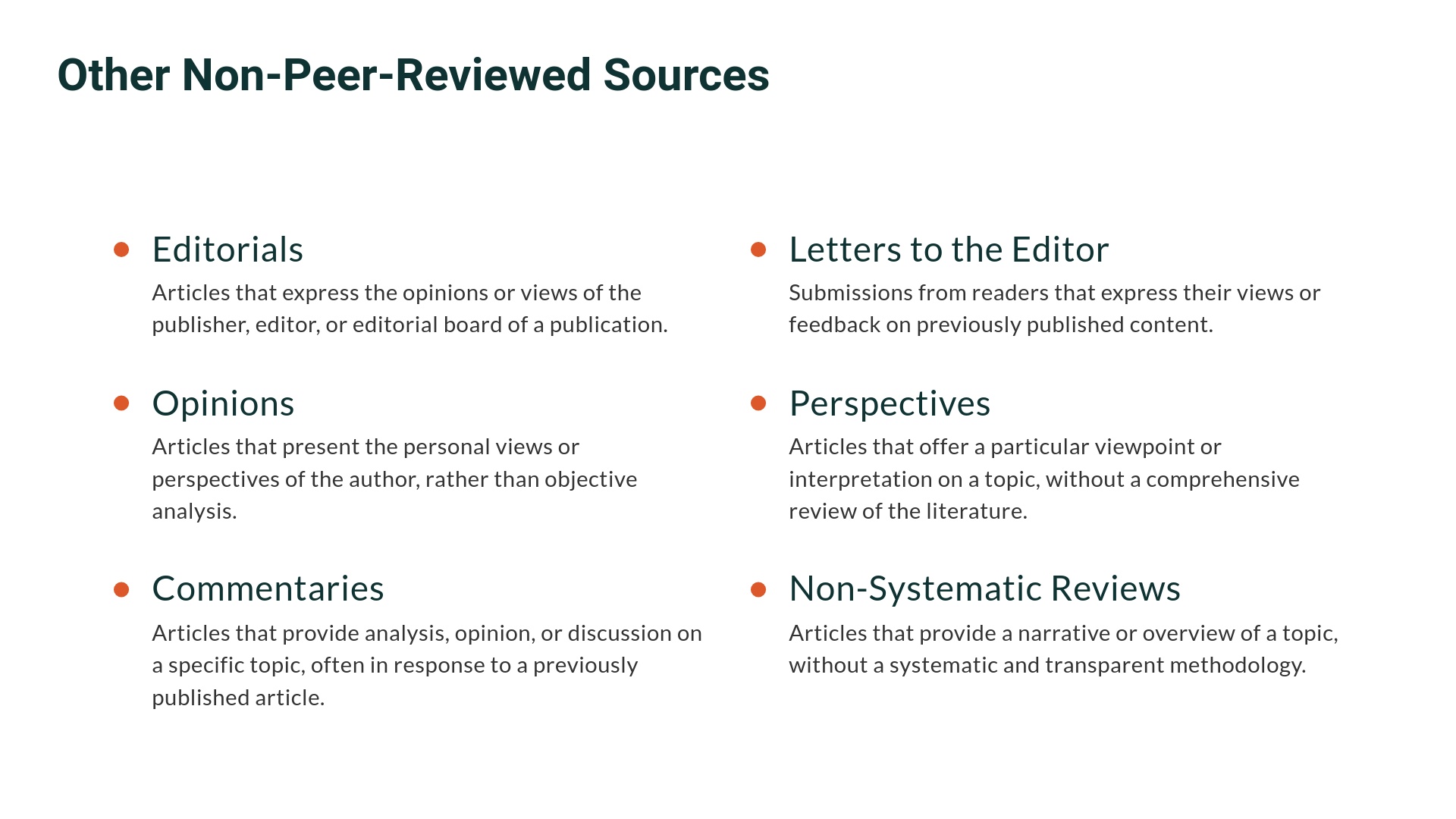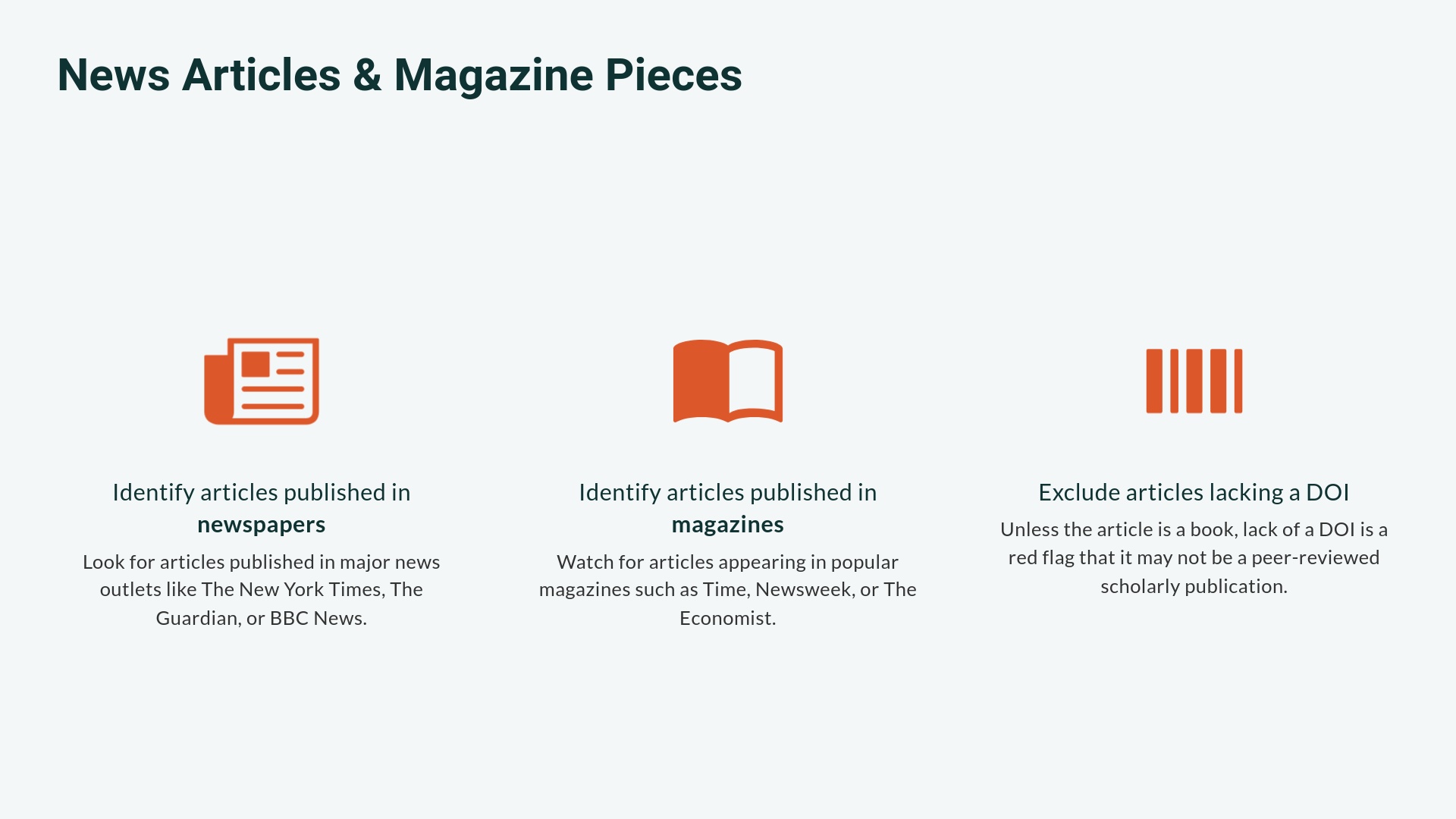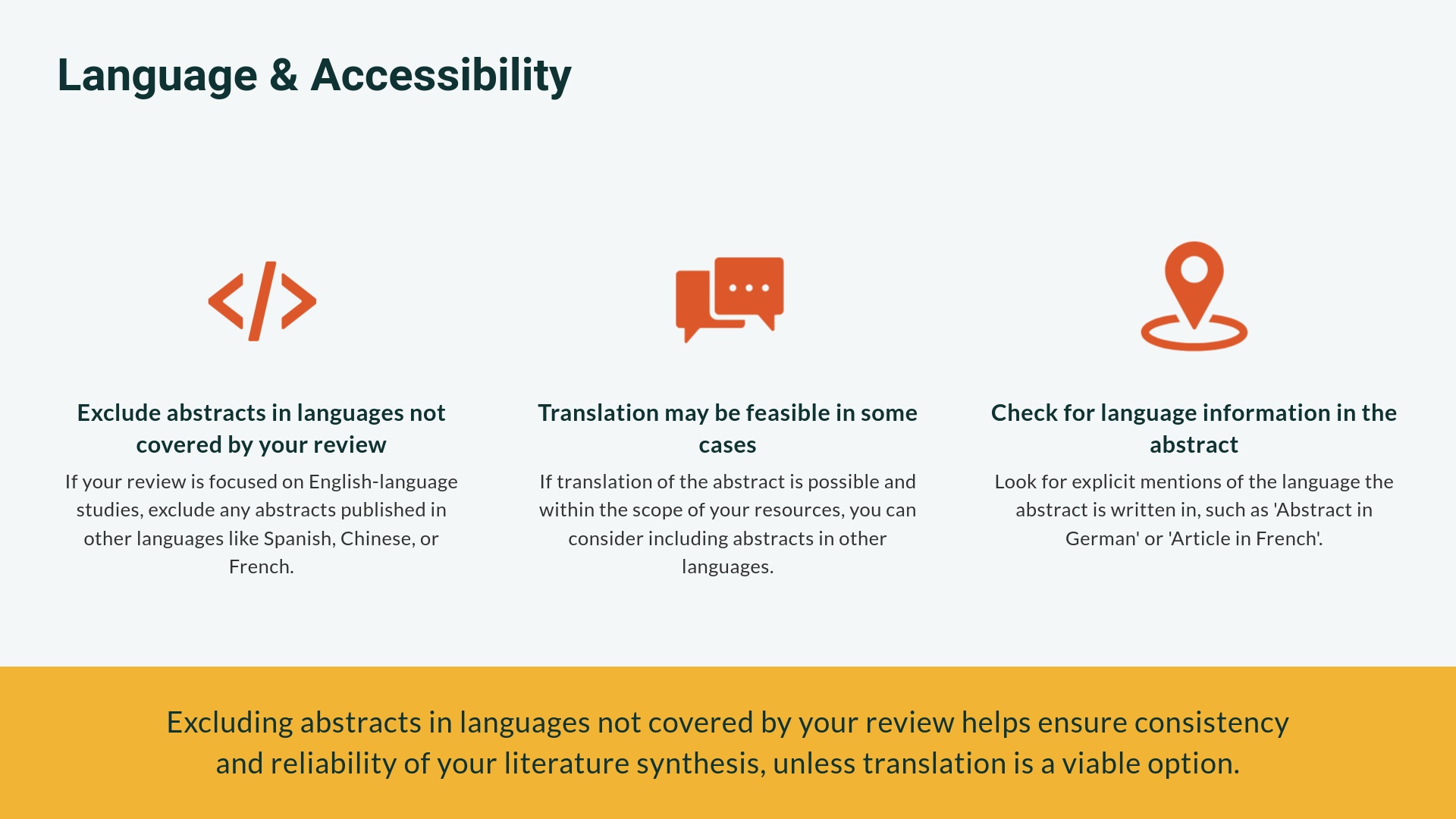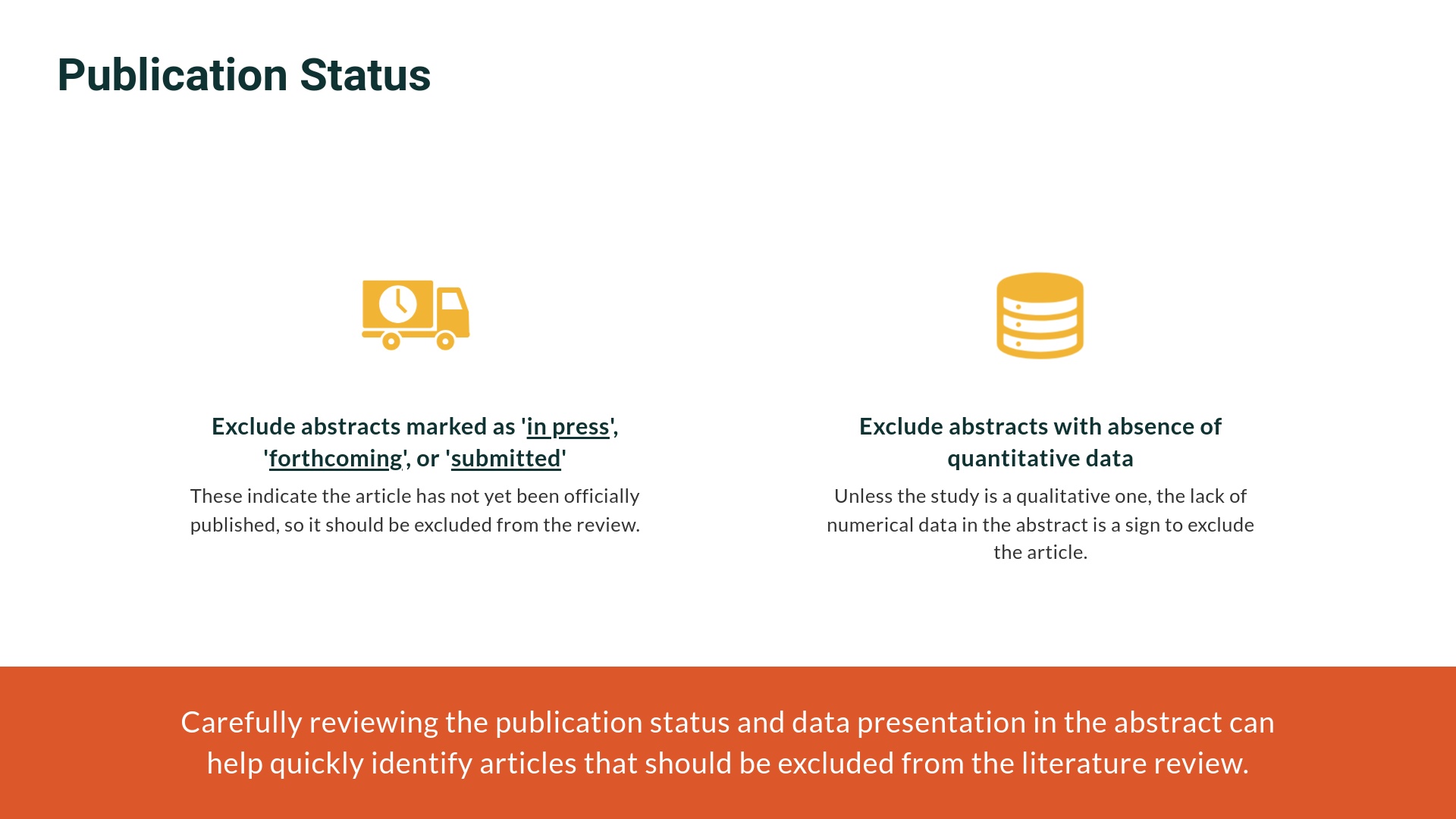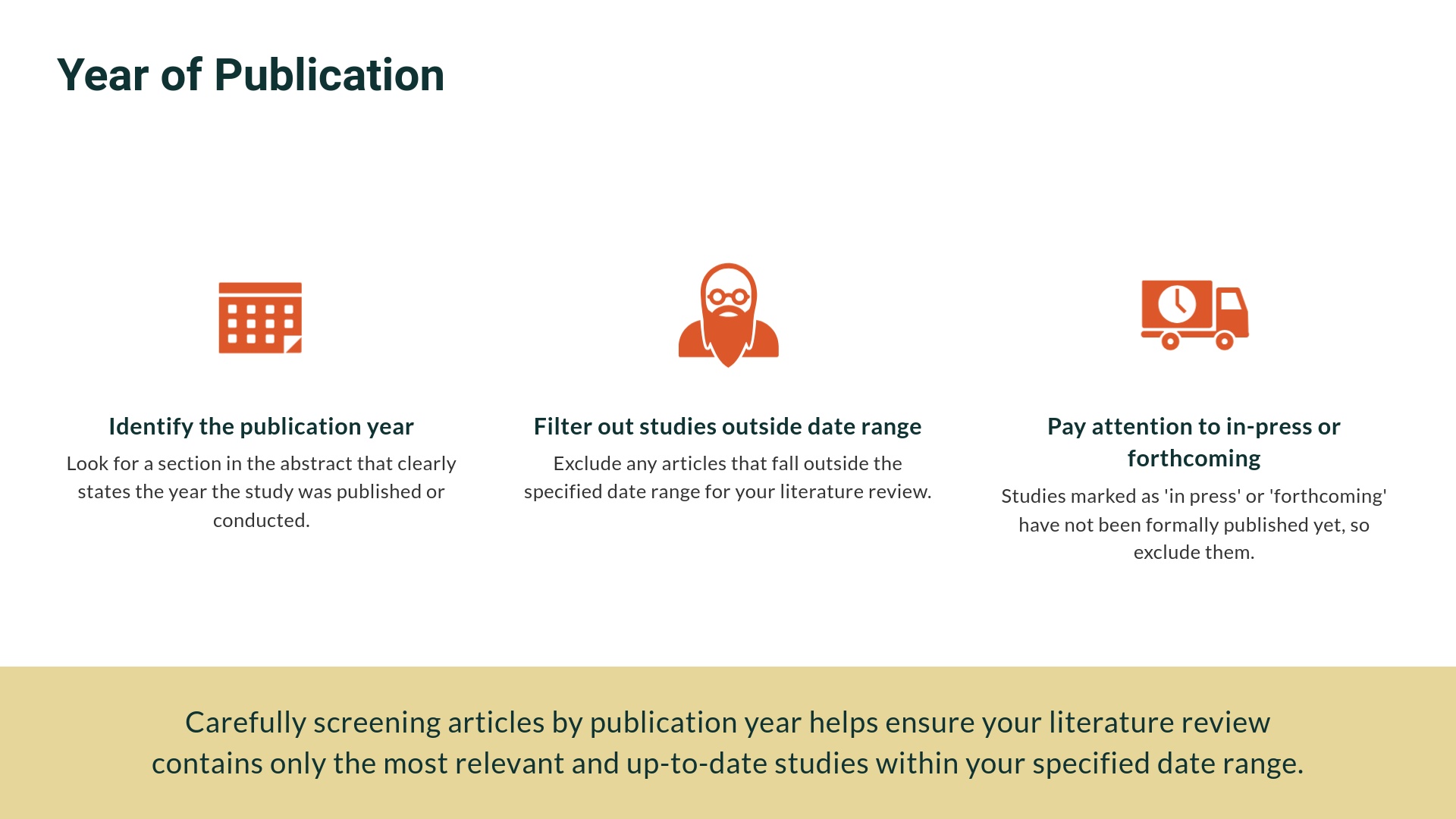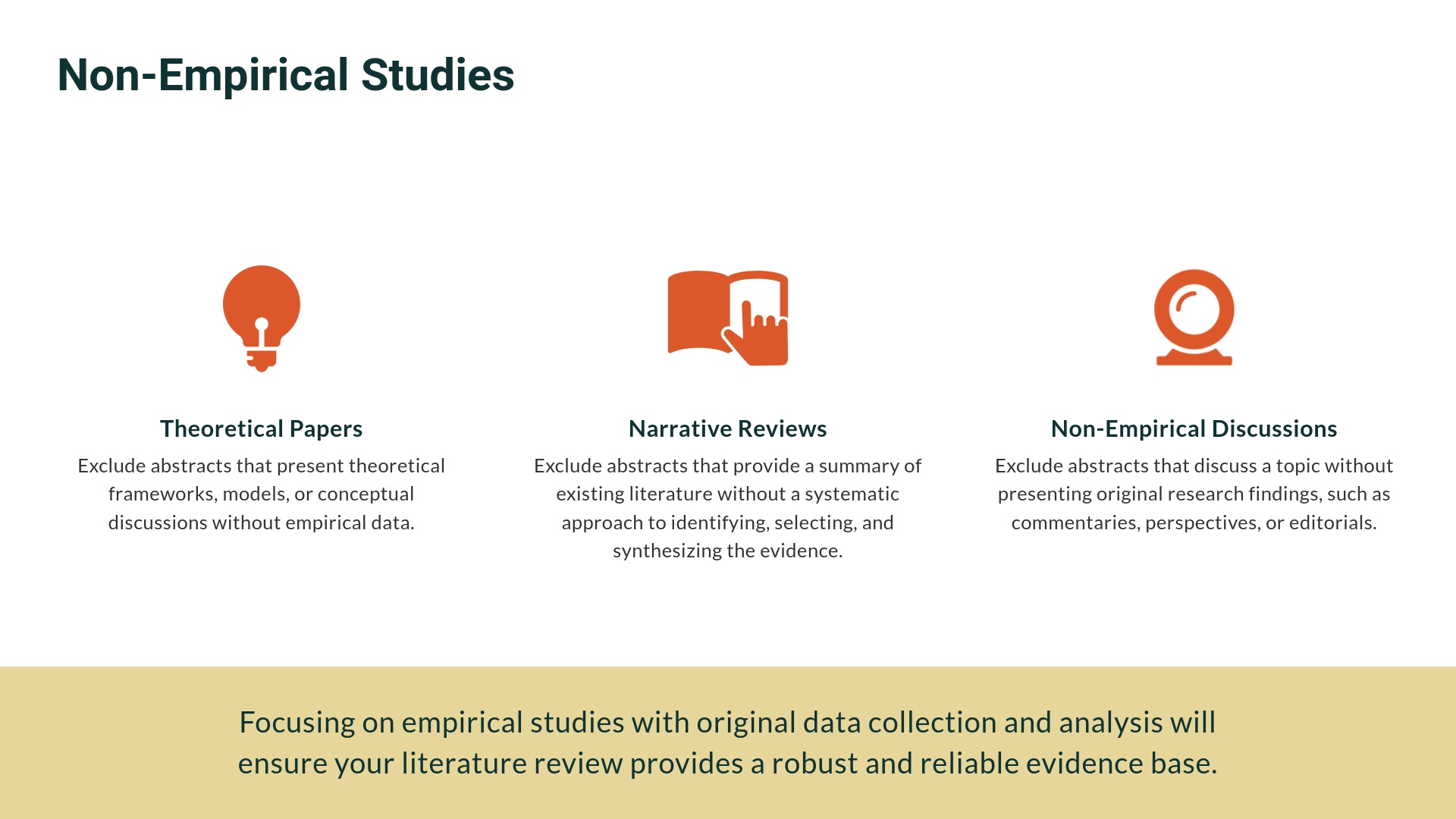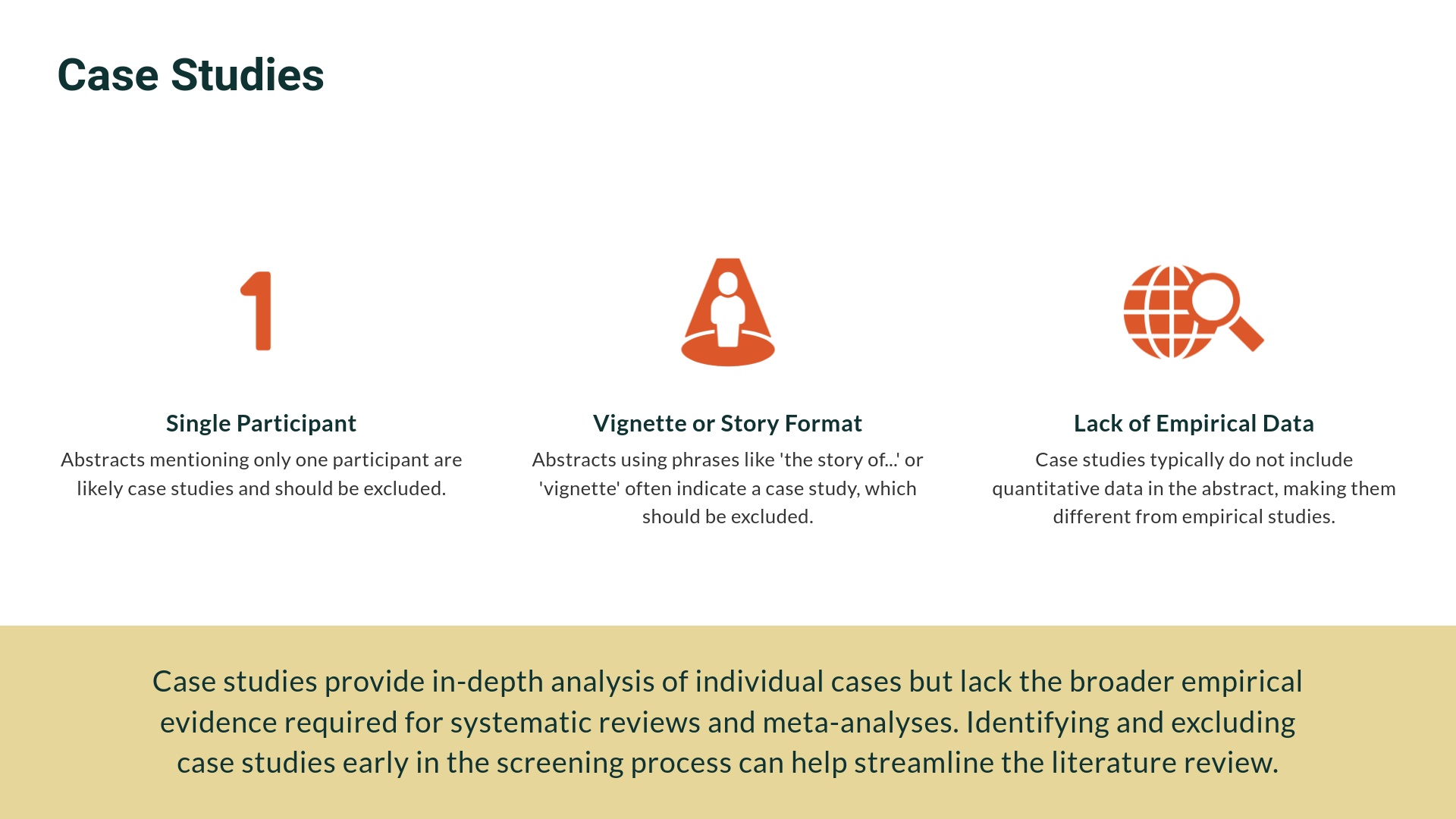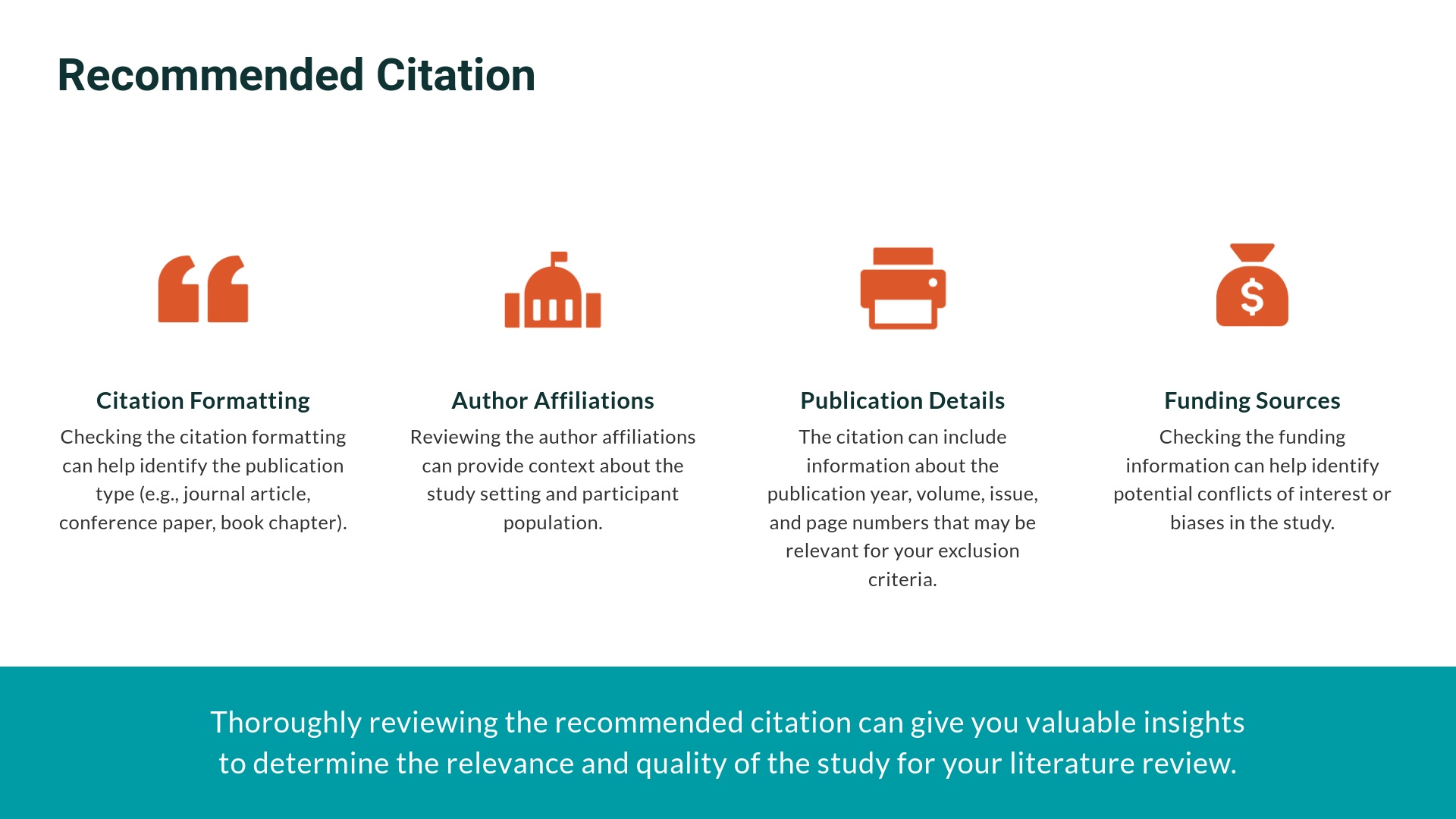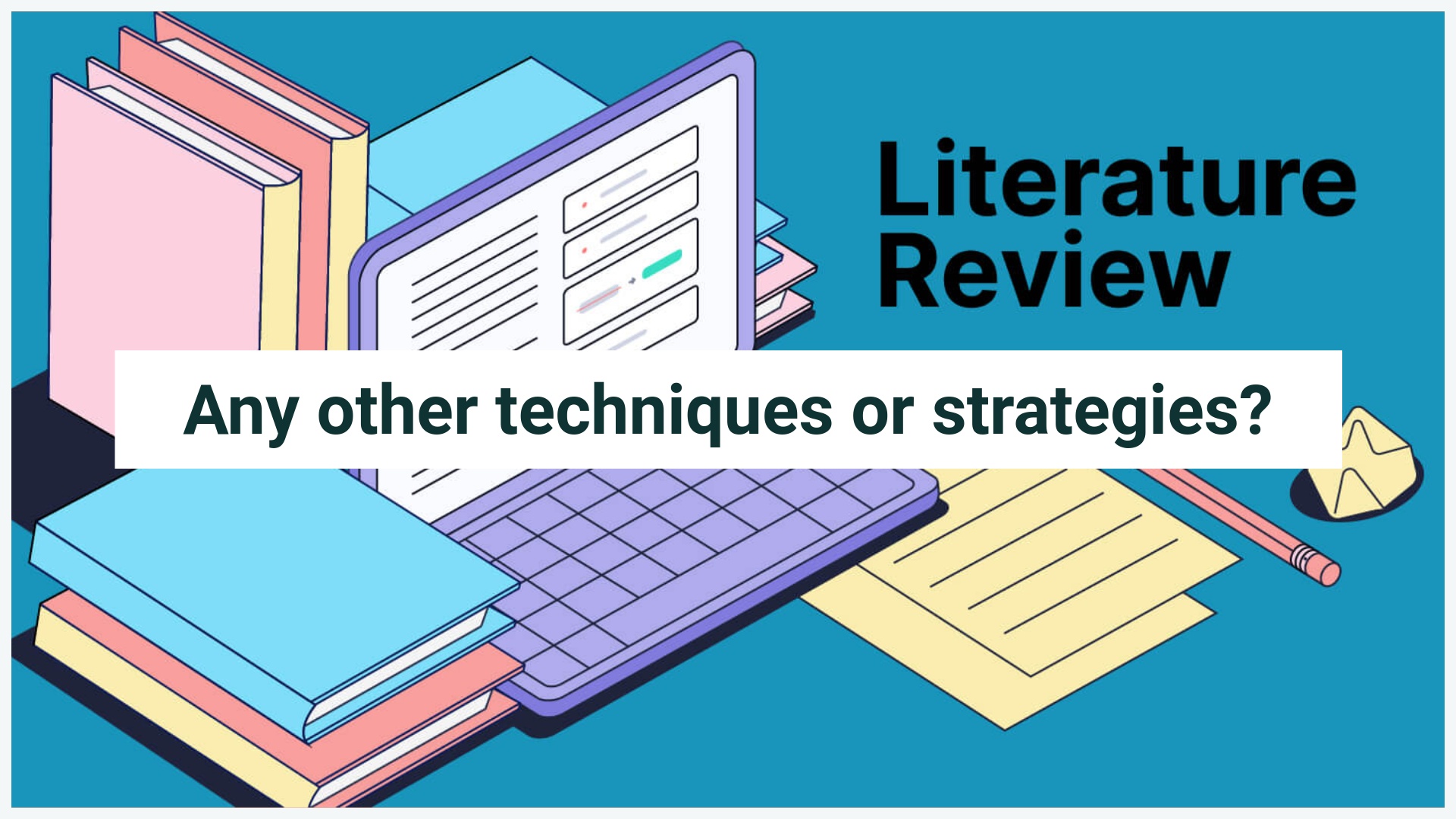Screening Tips: Red Flags Edition 🚩
Tips for quickly identifying abstracts to exclude
When conducting a literature review, I start by identifying the quickest elements to exclude an article. This approach allows me to streamline the process and focus on the most relevant studies.
Participant Criteria
The participant criteria are typically the easiest elements to locate. I search for sections labeled Methods, Participants, or Sample, and occasionally in Objectives/Aim. This section usually appears right after the introduction and often provides key figures, such as sample size or mean age, within the first 1-2 sentences of the abstract.
This is also where you can verify whether diagnostic or age criteria are met, especially when distinguishing between children and adults.
If your platform allows it (e.g., Rayyan, COVIDENCE), use highlighting features to search for inclusion/exclusion criteria keywords. This technique can significantly speed up your screening process!
Conference Proceedings
Be cautious of articles with conference details, such as:
[…] 60th Annual National Conference of All India Occupational Therapists Association (AIOTA, 2023), February 2-5, 2023.
Look for keywords like proceedings, conference, symposium, meeting, or workshop, along with abbreviations like Conf, Symp, or Proc, usually followed by a location and date.
For example:
Proceedings of the 23rd International Conference on…
Symposium on XYZ, held in…
If the title starts with a session number (e.g., T50, S49), it’s often an abstract submitted for a conference presentation and should be excluded due to lack of peer review.
Dissertations & Theses
Identify keywords such as dissertation, thesis, PhD, or doctoral.
These 2 examples indicate non-peer-reviewed material.
Master’s Thesis, University of…
PhD Dissertation, Department of…
Books & Book Chapters
Look for terms like chapter, section, handbook, guide, or edited by.
Examples include:
Chapter 4 in…
Handbook of Cognitive Science…
Most books will not have a doi but will have an ISSN or ISBN number (unless very recent).
Be cautious of overly brief and non-descriptive titles, as journals typically require more detailed titles for articles.
Non-Peer-Reviewed Sources
Exclude materials that are labeled as editorial, opinion, commentary, letter to the editor, perspective, or review (if not systematic).
Examples include:
Editorial: The Future of…
Letter to the Editor regarding…
Non-peer-reviewed sources can also include manuals, guides, resource lists, reports, and handbooks.
News Articles & Magazine Pieces
Identify articles published in newspapers, magazines, or other media outlets.
Examples include:
Published in The New York Times
Article in Time Magazine…
Articles lacking a DOI (unless they are books) are red flags for exclusion.
Language & Accessibility
Exclude abstracts in languages not covered by your review unless translation is feasible. For instance, if the review includes only English-language studies, any Spanish publications should be excluded.
Publication Status
Exclude abstracts marked as in press, forthcoming, or submitted.
The next examples indicate that such studies have not yet been published.
Article in press
Forthcoming in Journal of…
Additionally, if the abstract is written in the future tense (e.g., we will recruit 50 participants) or includes the word protocol, it should be excluded, as it indicates that data collection has not occurred. Absence of quantitative data in the abstract is also a good indicator for exclusion, except for qualitative studies (e.g., M = 39.9, SD = 5.9).
Year of Publication
Filter out articles published outside the specified date range of your review.
For example, exclude studies published in 1999 if your review covers 2000-2023.
Non-Empirical Studies
Exclude theoretical papers, narrative reviews, or non-empirical discussions.
Examples include:
A theoretical exploration of…
Narrative review of…
Case Studies
If an abstract mentions only one participant or includes phrases like the story of… or vignette, it is likely a case study, which should be excluded.
Recommended Citation
Finally, reviewing the recommended citation at the end of an article can provide additional information that may help you determine whether to exclude it, especially if you are familiar with citation formatting styles.
